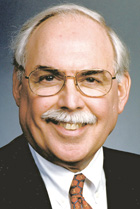
It’s no wonder long-term care providers prefer residents whose care is reimbursed by something other than Medicaid: The federal-state program was expected to underfund care by an average of nearly $20 per beneficiary day in 2011, according to a new analysis.
Overall, the underfunding would amount to $6.3 billion, according to study author Joseph Lubarsky, the president of Eljay LLC. The $19.55 per day average shortfall is a result of unprecedented state budget deficits, he said. The shortfall was just $16.54 per day in 2009.
“The actual shortfall in 2011 will likely be somewhat higher, since actual cost increases historically have outpaced projected inflationary increases for nursing homes,” Lubarsky noted in his report.
“The 2011 projected shortfall is at an unprecedented high and the outlook for 2012 is even worse,” he added.
Lubarsky and officials at the American Health Care Association, which sponsored the report, attribute the shortfall to a slower-than-anticipated economic recovery and regulatory pay changes to Medicaid and Medicare last year.
“The combined shortfall of both Medicare and Medicaid is projected to exceed $2 billion, marking an end to the current reliance on Medicare cross-subsidization of Medicaid shortfalls and the beginnning of greater uncertainty,” the report warns.
AHCA President and CEO Mark Parkinson said that it’s clear from this report that operators are “on the brink.”
State association leaders joined Parkinson in sounding a pessimistic note.
“Those who were hanging on by their fingernails were hanging on from Medicare,” said Richard Herrick, president and CEO of the New York State Health Facilities Association. “We’ve very concerned.”
From the January 01, 2012 Issue of McKnight's Long-Term Care News




